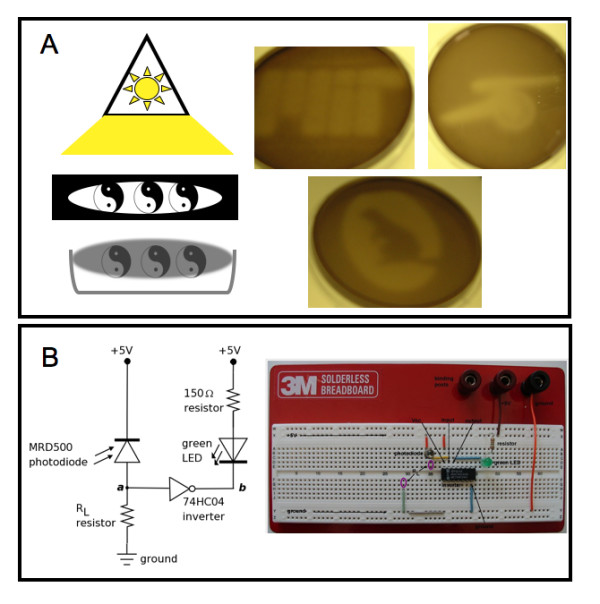Figure 1.

Teaching Synthetic Biology. The bacterial photography system (35) was used as the experimental overlay for an undergraduate curriculum in system engineering. (A) The experimental set-up (left) for the bacterial photography system includes a 660 nm light source that shines through a black and white mask onto a lawn of engineered bacteria. Overnight the bacteria precipitate a colored compound in the media depending on whether the cells are exposed to the light or hidden from it by the mask, giving rise to images like the student's examples that are shown (right). (B) Electronic components can be used to describe the genetic circuitry of the bacterial photography system (left). The light sensor function that is encoded by proteins in the bacterial cells is represented as a photodiode and inverter. An LED represents the actuator function. Students can vary the resistors on a breadboard (right) to consider design issues such signal matching and parts optimization.
